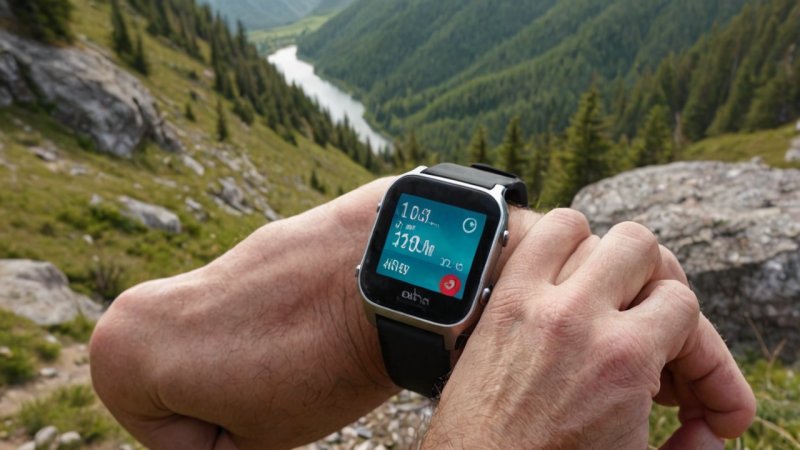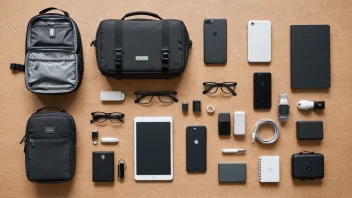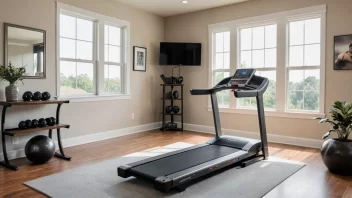In an age where technology permeates every aspect of our lives, outdoor workouts are no exception. The rise of wearables has transformed how we approach fitness, enabling us to monitor our performance, manage our health, and enhance our overall experience in the great outdoors. With a myriad of devices available on the market, understanding how to effectively incorporate wearables into your outdoor workout routine can make a significant difference in your performance and enjoyment. This guide will explore the various types of wearables, their benefits, and practical tips on how to use them to enhance your outdoor fitness endeavors.
Understanding Wearables
Wearables encompass a wide range of devices designed to be worn on the body, often equipped with sensors and technology that track various health metrics. These can include smartwatches, fitness trackers, heart rate monitors, GPS devices, and more. The primary goal of wearables is to provide users with real-time data that can inform and improve their fitness routines.
Types of Wearables
- Smartwatches: Multifunctional devices that offer fitness tracking along with notifications and apps.
- Fitness Trackers: Focused primarily on health metrics, these devices monitor steps, calories burned, sleep, and more.
- Heart Rate Monitors: Typically worn on the wrist or chest, these devices provide accurate heart rate readings.
- GPS Devices: Essential for outdoor workouts, these devices track distance, pace, and route.
- Smart Clothing: Garments embedded with sensors that can track various metrics while you move.
The Benefits of Using Wearables for Outdoor Workouts
Integrating wearables into your outdoor fitness routine offers numerous advantages. Here are some key benefits:
Real-Time Data Tracking
One of the most significant advantages of wearables is their ability to provide real-time feedback. Whether you're running a trail, cycling through the mountains, or hiking up a hill, having access to metrics like heart rate, pace, and distance can help you adjust your effort on the fly, ensuring you get the most out of your workout.
Goal Setting and Progress Monitoring
Wearables allow you to set specific fitness goals—be it running a certain distance, burning a specific number of calories, or maintaining a target heart rate. Many devices offer insights into your progress, helping keep you motivated and focused.
Health Monitoring
Beyond fitness, wearables provide valuable health metrics. Features like sleep tracking, stress monitoring, and recovery suggestions can guide you in maintaining a balanced routine that supports overall wellness.
Safety Features
Many modern wearables come equipped with safety features, such as GPS tracking and emergency alerts. These can be especially beneficial when venturing into remote or unfamiliar areas, providing peace of mind during solitary outdoor workouts.
Choosing the Right Wearable for Your Outdoor Workouts
With so many options available, selecting the right wearable can be daunting. Here are some factors to consider:
Activity Type
Different activities require different features. For instance, if you’re primarily running, a lightweight fitness tracker may suffice. However, for more complex activities like mountain biking or hiking, a smartwatch with GPS and altimeter may be necessary.
Battery Life
Outdoor workouts can be lengthy, so battery life is crucial. Look for wearables that offer extended battery life, especially if you plan on using GPS features frequently.
Durability and Weather Resistance
Outdoor workouts often come with exposure to the elements. Ensure your device is durable and water-resistant to withstand various weather conditions and rugged terrains.
Compatibility and Ecosystem
Consider how well the wearable integrates with your existing devices and apps. Many wearables sync with smartphones and fitness applications, providing a seamless experience.
Practical Tips for Using Wearables in Outdoor Workouts
To maximize the benefits of your wearable, consider these practical tips:
Set Realistic Goals
Use your wearable to set achievable goals based on your fitness level. Gradually increase your targets as you progress to avoid burnout and injury.
Regularly Sync and Analyze Your Data
Periodically sync your wearable with its companion app to analyze your performance. Look for trends in your data that can inform future workouts and adjustments.
Utilize Training Programs
Many wearable devices offer built-in training programs tailored to different fitness levels and goals. Use these resources to enhance your outdoor workouts and keep your routine fresh.
Incorporate Social Features
Many wearables allow you to connect with friends or join fitness communities. Sharing your progress can provide motivation and accountability.
Listen to Your Body
While wearables provide valuable data, it’s essential to listen to your body. If you feel fatigued or experience discomfort, adjust your activities accordingly.
Conclusion
Wearables have revolutionized the way we approach outdoor workouts, offering valuable insights and tools to enhance our fitness journey. By understanding the different types of devices available, their benefits, and how to effectively use them, you can significantly improve your outdoor exercise experience. Whether you're a seasoned athlete or just starting, integrating wearables into your routine can lead to better performance, health monitoring, and overall enjoyment in the great outdoors. Remember, the key to maximizing the benefits of technology is to stay informed, set realistic goals, and listen to your body as you embark on your outdoor adventures.






